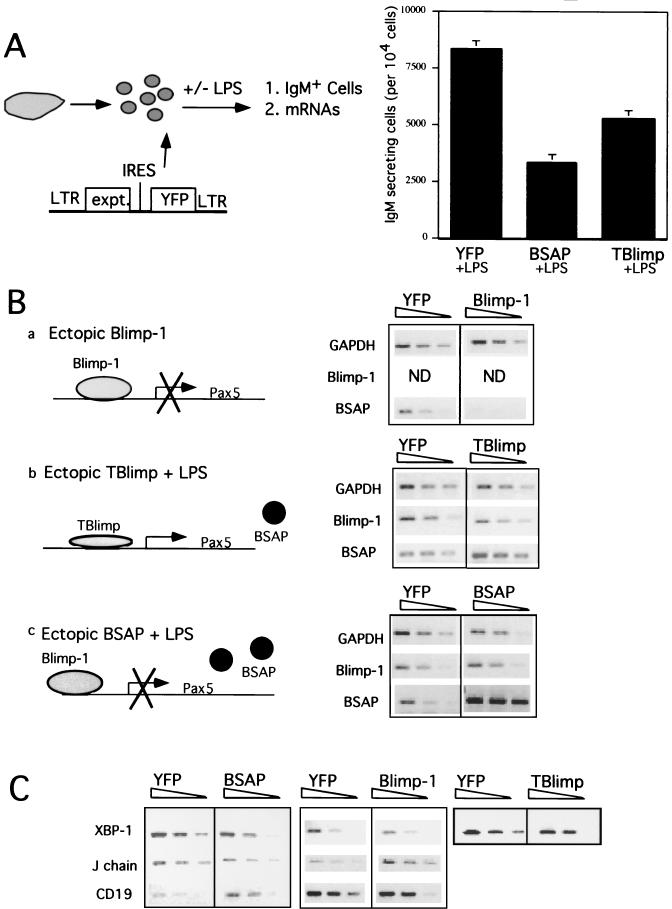FIG. 4.
Effects of ectopic expression of Blimp-1, BSAP, and TBlimp on splenic B-cell terminal differentiation. (A) ELISPOT assay showing that ectopic expression of BSAP and TBlimp blocks the differentiation of murine splenocytes in response to LPS. Purified murine splenic B cells were infected with bicistronic retrovirus, pGC-BSAP-YFP, pGC-TBlimp-YFP, or control virus (pGC-YFP) and subsequently treated with LPS. Three days after virus infection, YFP+ cells were sorted and used for an ELISPOT assay. Error bars represent the standard deviations from two experiments each performed in triplicate. (B) Blimp-1 is necessary and sufficient for repression of Pax-5 during plasma cell differentiation. Purified splenic B cells were infected with retrovirus carrying Blimp-1 (pGC-Blimp-1-YFP) or control virus (pGC-YFP). Additionally, splenic B cells were cultured and infected with other retroviruses, pGC-BSAP-YFP (BSAP), pGC-TBlimp-YFP (TBlimp), and their control virus, pGC-YFP (YFP), as described in Materials and Methods. Three days after infection, YFP+ cells were sorted and used for semiquantitative RT-PCR analysis with primers specific for the indicated genes. GAPDH was used to control for equal amounts of cDNA. Fourfold dilutions of cDNA were used for PCR. Results are shown for ethidium bromide-stained PCR products separated by electrophoresis on a 1.5% agarose gel. Diagrams a to c show the rationale of the experimental strategies. (C) Blimp-1-dependent repression of Pax-5 alters mRNAs for BSAP downstream targets. cDNAs from panel B were used for PCR amplification with primers specific for CD19, J chain, and XBP-1 genes. GAPDH levels for the internal control in panel C were the same as in panel B.

